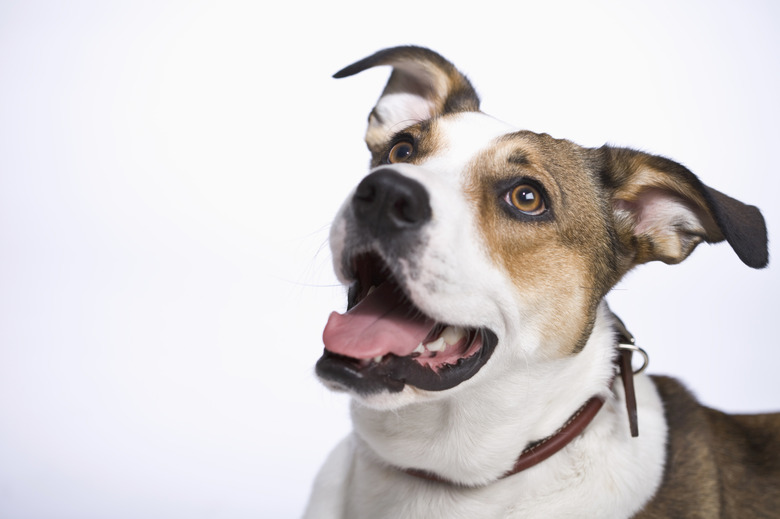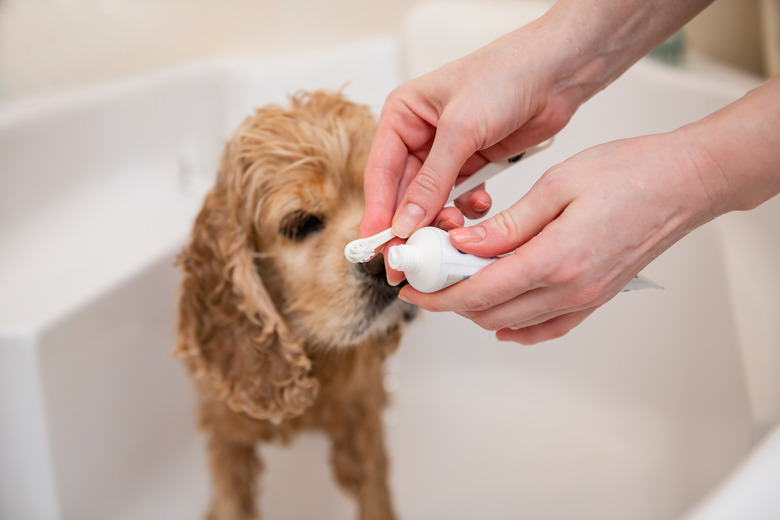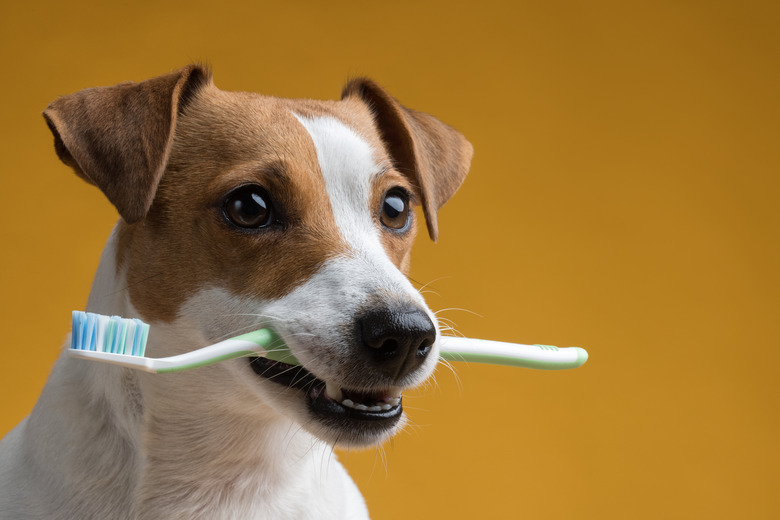Taking Care Of A Dog With Gum Disease
Oral gum care can often be overlooked when dealing with canines. Taking care of your pet's teeth and gums can be vital in fighting off potential infections or tooth loss. There are many dog-specific dental products available over the counter for the prevention of dental and periodontal disease. These are preferable over home remedies that may have too much or too little of an active ingredient, making them both safer and more effective.
There are home remedies available to help address dental care while you are waiting for your appointment if you don't have access to any of the over-the-counter products. But none of these home remedies are approved for use in dogs, and they are not backed by scientific proof that they are effective except for dog-specific chlorhexidine products.
Gum disease in dogs symptoms
Gum disease in dogs symptoms
Approximately 80 percent of dogs over the age of 3 will experience periodontal disease. The warning signs of periodontal disease, gingivitis, or gum disease in dogs include:
- Excessive
drooling - Stringy
or bloody saliva - Brown or yellow-stained teeth
- Loose
or missing teeth - Chewing
on one side of the mouth - Dropping
food while chewing - Gulping down kibble without chewing
- Bad
breath (halitosis) - Inflammation
of the gums - Bleeding
at the gum line - Blood
on your dog's chew toys or in their water bowl - Loss of
appetite - Weight
loss - Sensitivity
of the mouth or not wanting to be touched - Hiding
or avoiding people - Irritability
If you notice any of these warning signs, contact your veterinarian. They will be able to do an exam to assess your dog's dental health and make recommendations for how to treat the problem and improve your dog's oral health going forward.
Dog gum disease causes
Dog gum disease causes
The underlying cause of periodontal disease is the presence of a bacteria. These bacteria can flourish in your dog's mouth due to various causes. By understanding the causes, you can take better steps to prevent dental problems before they occur.
The most common causes of dental disease include:
- Pour nutrition
or diet - Excessive
grooming - Improper
alignment of the teeth (e.g., crowded teeth, especially in small dogs) - Chewing
on dirty or contaminated toys - Unaddressed
tartar buildup due to insufficient oral care
Home remedies for dog gum disease
Home remedies for dog gum disease
The following are commonly shared dog dental home remedies for those who are waiting for an appointment. These should not be seen as a substitute for proper veterinary dental care.
Chlorodexidine
Chlorodexidine is a chemical antiseptic that can kill bacterial microbes by rinsing out your dog's mouth with a 0.12 percent solution, also called Nolvadent. You can also purchase many over-the-counter products with chlorodexidine, such as Dentahex, Ora-Clens dental wipes, and C.E.T. products. If you find it difficult to rinse out your dog's mouth, you can also apply the chlorodexidine to a cotton swab and gently wash and massage the gums and teeth with the solution.
Vitamin C
Vitamin C is well known for increasing the body's ability to fight off infections and illnesses. Giving your dog vitamin C will help decrease any swelling or pain within the gums or mouth. However, too much vitamin C can cause intestinal upset. High doses of vitamin C can also increase a dog's risk for oxalate bladder stones.
Essential oils
Some people may recommend a DIY toothpaste using essential oils, coconut oil, and baking soda, or similar ingredients. There is not a lot of testing or evidence to support natural remedies like this. Unless you can be sure that the ingredient is safe and you know how much to give your dog based on the weight difference between small dogs and larger dogs, it's best to err on the side of caution and use only an approved product for oral care.
How to prevent dog gum disease
How to prevent dog gum disease
While the above home remedies aren't recommended by veterinary professionals, there are steps that you can take at home to prevent gum disease.
- Brush your dog's teeth: Regular
brushing with a toothpaste made specifically for dogs will help to remove the
plaque and tartar responsible for most dental problems. Unlike human toothpaste,
dog toothpaste is safe to be swallowed. - Dental chews or toys: Both dental
chews and toys clean your dog's teeth by scraping away the plaque buildup as they chew
before it can harden into tartar. - Dental formula diets: Some dog
foods have been specifically formulated to remove plaque with the shape of the
food itself, working like a dental chew, or they may contain chemical ingredients that
offer dental benefits. - Water additives: Dental water
additives are chemicals that can be added to your dog's water. As they drink,
the chemicals work to rinse your dog's mouth and clean unwanted bacteria. - Regular toy cleaning: Your dog's
favorite chew toys can pick up and collect a surprising amount of dirt, debris,
and bacteria. Regularly cleaning your dog's toys will reduce the chances that
bacteria can be transferred and thus contribute to dental problems.
How to brush a dog’s teeth
How to brush a dog's teeth
Many dog owners avoid teeth cleaning either because their dog is afraid of the toothbrush or they are overwhelmed by the idea of brushing their teeth. But it doesn't have to be difficult. The most important thing you can do is introduce your dog to the toothbrush as early as possible.
To brush your dog's teeth, you will need a suitable toothbrush and toothpaste that is made specifically for canines. Dog toothbrushes commonly come in two varieties: a toothbrush similar to a human toothbrush but with a longer, curved handle or a small rubber or silicone brush that can be worn on your finger. However, the finger brushes aren't as effective compared to a regular toothbrush. The toothpaste must be dog-safe, as human toothpastes often contain ingredients that aren't meant to be swallowed and are toxic to dogs.
The process for brushing your dog's teeth is as follows:
- Create a safe environment: To keep
your dog's fear and anxiety at bay, make sure you are brushing their teeth in a
quiet area with minimal distractions. You should also check the lighting to
ensure that you are going to be able to see during the process. - Practice by handling your dog's mouth:
From the first moment you bring your dog home, practice handling their mouth.
This includes holding the muzzle, lifting their lips to reveal their teeth, and
even touching their teeth like they will experience when a toothbrush is
involved. - Introduce the toothbrush: When you
first show the toothbrush to your dog, don't count on brushing. Instead, allow
them to sniff and get used to the toothbrush. Practice touching it to their
teeth gently, rewarding them for allowing you to do so. - Add toothpaste to the toothbrush: Place a
small amount of dog-friendly toothpaste on your dog's toothbrush and allow them
to lick it off. This will create a positive connotation with the toothbrush
itself as well as the smell of the toothpaste. - Start with the exposed teeth: The
first couple of times that you brush your dog's teeth, focus on the outside of
the teeth at the front. These are easier for you to reach. - Work up to brushing the sides, inside, and back: When you notice your dog is comfortable, slowly
extend the area you are brushing. Pay attention to their comfort level, pushing
them out of their comfort zone for just a moment without overwhelming them. It could take several brushings to work up to a full brushing.
The most important thing to remember throughout this process is to make it positive. Make sure that you are calm and relaxed. Praise and reward your dog every step of the way.
When to see a veterinarian
When to see a veterinarian
It is important to note that the above recommendations are only suggested home remedies for the care of your dog's gum and mouth areas while you are waiting to get in for a veterinary appointment. If your dog presents with any oral issues, including any form of gum disease, it is important to seek medical attention through your pet's veterinarian. Canine periodontal disease can lead to life-threatening infections that can affect your pet's liver, or cause kidney disease and heart disease. Regular checkups by your veterinarian can help reduce signs and symptoms of gum disease.
All dogs under the age of 7 years should have annual physical exams. (After the age of 7, an exam should be done twice a year.) Based on your dog's dental health and general health, your veterinarian will recommend when you should schedule their first professional dental cleaning under general anesthesia. While they are anesthetized, your veterinarian will be able to perform tasks that can't be done when your dog is awake, including dental X-rays and probing the gingiva for pockets. X-rays are an important tool for assessing your dog's oral hygiene, as a tooth can look normal but still have a problem below the gum line. This will allow your veterinarian to evaluate the teeth roots and any periodontal bone loss. You can also see an abscess on an X-ray, but there may be no evidence of it otherwise.
The bottom line
The bottom line
Pet owners should know that approximately two-thirds of dogs will experience periodontal disease by the age of 3. The best way to prevent dental or gum disease in dogs is to focus on dental care. While there are home remedies available, they are not as effective as proper veterinary dental care. Contact your DVM to make an appointment for a professional cleaning. Between dental appointments, consider brushing your dog's teeth or using products specifically created to improve your dog's dental health.


